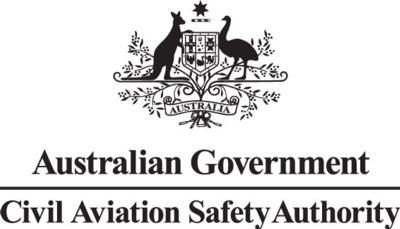Fri, Apr 04, 2014
New Rules Could Save $2 Million (AU) Across The Industry
New regulations covering a large number of flying training organizations in Australia are being simplified, according to that country's Civil Aviation Safety Authority (CASA). The agency says the move follows a review of its Part 141 of the Civil Aviation Safety Regulations.

The simplification of the rules and requirements will cut red tape and reduce costs for about 300 flying training schools across Australia. CASA estimates the changes will lower costs in the flying training industry by nearly $2 million (AU) a year. Optimal safety outcomes for flying training will be maintained by retaining the core elements of the new Part 141.
Part 141 covers flying training for recreational, private and commercial pilot licenses, ratings and endorsements for single pilot aircraft. It does not extend to intensive integrated training for private and commercial licenses, which is contained in Part 142 of the Civil Aviation Safety Regulations. The new licensing suite of regulations, which includes Part 141, will take effect from 1 September 2014. Simplification of the requirements will be made before the regulations come into effect.
Key changes to Part 141 are:
- The requirement for a safety management system will be removed. Recommending safety management systems are implemented for small, simple flying training organizations is more beneficial than mandating them.
- A quality assurance manager will no longer be required and the quality assurance system requirements will be simplified for operators who are limited to simulator training.
- There will no longer be a need to develop an exposition when transitioning to the new rules. An operations manual will achieve the same safety outcomes.
- To help reduce the administrative burden on flying schools, CASA will provide training course material and off-the-shelf operations manual material.
- A policy statement will be developed in relation to entry control processes to ensure they do not go beyond what is legislatively required.
CASA’s Director of Aviation Safety, John McCormick, said the review of flying training regulations was conducted in line with the Federal Government’s direction to look for opportunities to reduce the cost and burden of regulatory compliance on industry.
“I am very pleased the new regulations in Part 141 can be simplified and made less costly while at the same time maintaining high safety outcomes,” McCormick said. “Naturally, safety can never be jeopardized in the pursuit of simpler regulations but with hard work the two outcomes can be achieved. CASA has listened to the views of people in the flying training sector and responded to their concerns with positive action.”
More News
Terminal Radar Service Area Airspace surrounding designated airports wherein ATC provides radar vectoring, sequencing, and separation on a full-time basis for all IFR and participa>[...]
Very High Frequency (VHF) The frequency band between 30 and 300 MHz. Portions of this band, 108 to 118 MHz, are used for certain NAVAIDs; 118 to 136 MHz are used for civil air/grou>[...]
“From approximately November 2021 through January 2022, Britton-Harr, acting on behalf of AeroVanti, entered into lease-purchase agreements for five Piaggio-manufactured airc>[...]
Also: Virtual FLRAA Prototype, IFR-Capable Autonomous A/C, NS-32 Crew, Golden Dome Missile Defense Bombardier announced that the first production Global 8000 successfully completed>[...]
Aero Linx: The 1-26 Association (Schweizer) The Association’s goal is to foster the helpfulness, the camaraderie, and the opportunity for head-to-head competition that is fou>[...]
 ANN's Daily Aero-Term (05.29.25): Terminal Radar Service Area
ANN's Daily Aero-Term (05.29.25): Terminal Radar Service Area ANN's Daily Aero-Term (05.30.25): Very High Frequency (VHF)
ANN's Daily Aero-Term (05.30.25): Very High Frequency (VHF) Aero-News: Quote of the Day (05.30.25)
Aero-News: Quote of the Day (05.30.25) Airborne 05.23.25: Global 8000, Qatar B747 Accepted, Aviation Merit Badge
Airborne 05.23.25: Global 8000, Qatar B747 Accepted, Aviation Merit Badge ANN's Daily Aero-Linx (05.30.25)
ANN's Daily Aero-Linx (05.30.25)



